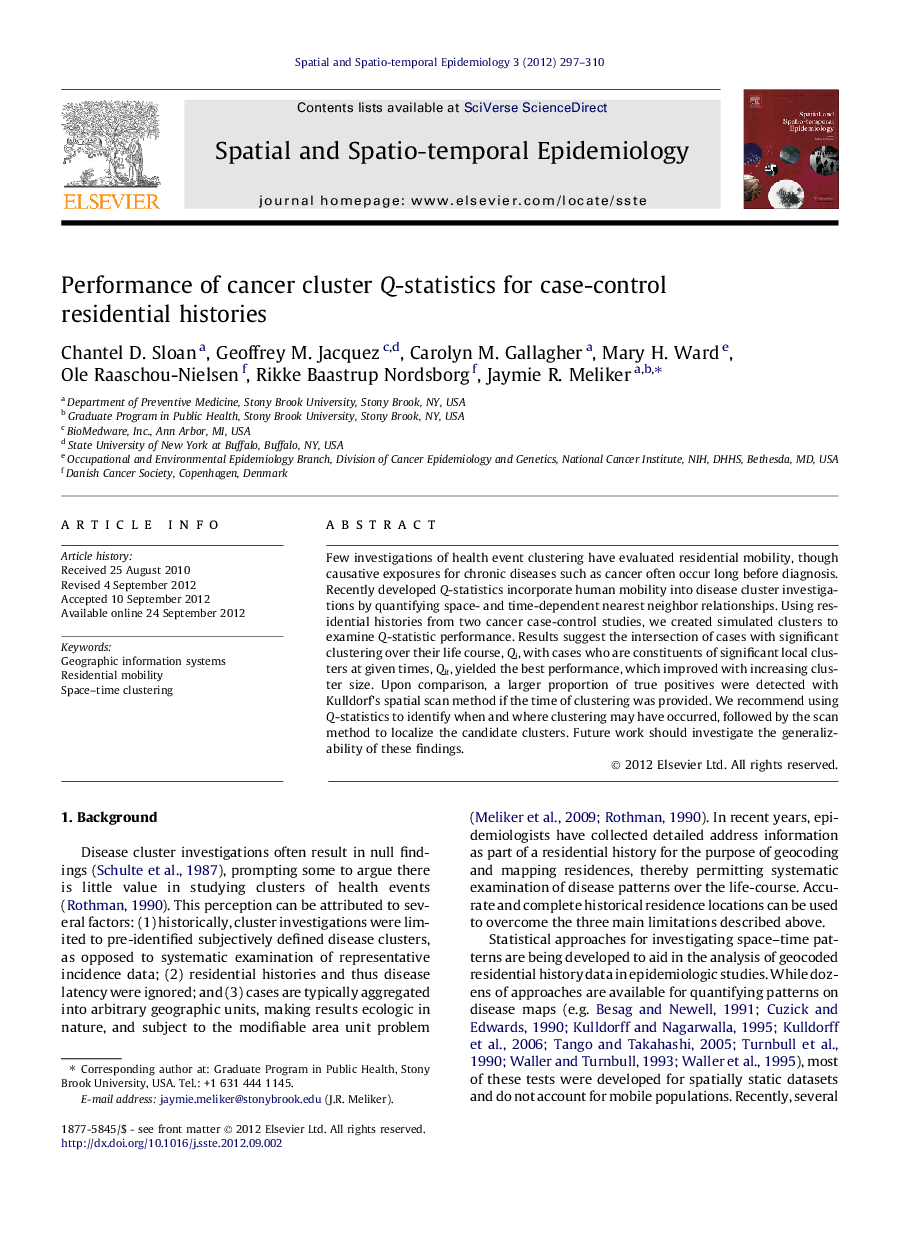| Article ID | Journal | Published Year | Pages | File Type |
|---|---|---|---|---|
| 1064393 | Spatial and Spatio-temporal Epidemiology | 2012 | 14 Pages |
Few investigations of health event clustering have evaluated residential mobility, though causative exposures for chronic diseases such as cancer often occur long before diagnosis. Recently developed Q-statistics incorporate human mobility into disease cluster investigations by quantifying space- and time-dependent nearest neighbor relationships. Using residential histories from two cancer case-control studies, we created simulated clusters to examine Q-statistic performance. Results suggest the intersection of cases with significant clustering over their life course, Qi, with cases who are constituents of significant local clusters at given times, Qit, yielded the best performance, which improved with increasing cluster size. Upon comparison, a larger proportion of true positives were detected with Kulldorf’s spatial scan method if the time of clustering was provided. We recommend using Q-statistics to identify when and where clustering may have occurred, followed by the scan method to localize the candidate clusters. Future work should investigate the generalizability of these findings.
► Tested Q-statistics using simulated clusters in US and Danish populations. ► Simulated clusters were best detected when sufficiently large and dense. ► Inspecting intersections between Q-statistic metrics improves inference. ► Using a scan statistic following Q-statistic helps confirm cluster locations.
